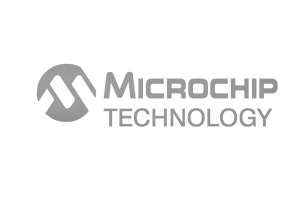MRF24J40-I/ML Overview
The MRF24J40-I/ML is a highly integrated 2.4 GHz IEEE 802.15.4-compliant RF transceiver designed for low-power wireless applications. It supports data rates up to 250 kbps and operates in the globally available 2.4 GHz ISM band, making it ideal for ZigBee, wireless sensor networks, and home automation systems. This device integrates a fully functional RF front-end, baseband, and MAC sublayer hardware acceleration, reducing the system complexity and power consumption. Its compact 32-pin 4×4 mm QFN package facilitates easy integration into space-constrained designs. For more detailed information and purchasing options, visit IC Manufacturer.
MRF24J40-I/ML Technical Specifications
| Parameter | Specification |
|---|---|
| Operating Frequency | 2.4 GHz ISM Band (2.4?C2.4835 GHz) |
| Data Rate | Up to 250 kbps (IEEE 802.15.4) |
| Output Power | +1 dBm (typical) |
| Receiver Sensitivity | -100 dBm (at 1% PER) |
| Supply Voltage | 2.7 V to 3.6 V |
| Current Consumption (Transmit) | 17.4 mA (typical at +1 dBm output) |
| Current Consumption (Receive) | 19.7 mA (typical) |
| Standby Current | 1 ??A (typical) |
| Package | 32-pin, 4×4 mm QFN |
| Interface | SPI (Serial Peripheral Interface) |
MRF24J40-I/ML Key Features
- Integrated RF Front End: Provides a complete 2.4 GHz transceiver solution with low noise amplifier and power amplifier, minimizing external components and board space.
- IEEE 802.15.4 Compliance: Ensures interoperability in ZigBee and other low-rate wireless personal area networks, simplifying design and certification.
- Low Power Operation: Offers minimal current consumption in transmit, receive, and standby modes, extending battery life in portable and sensor applications.
- SPI Interface: Supports high-speed SPI communication for easy integration with microcontrollers and embedded processors.
- Robust Receiver Sensitivity: Achieves -100 dBm sensitivity for reliable communication in noisy environments and extended range.
- Compact Packaging: The 4×4 mm QFN form factor enables integration in compact, space-constrained industrial and consumer electronics.
- Hardware MAC Acceleration: Offloads packet framing and checksum processing from the host MCU, reducing processor load and improving system efficiency.
MRF24J40-I/ML Advantages vs Typical Alternatives
This transceiver distinguishes itself through a combination of high receiver sensitivity and low power consumption, which enhances wireless link reliability while preserving battery life. Its compliance with IEEE 802.15.4 standards ensures broad compatibility, while the integrated RF front end reduces the bill of materials and design complexity compared to discrete solutions. The compact package and hardware MAC acceleration further streamline integration and system performance, making it a preferred choice for industrial and commercial wireless designs.
🔥 Best-Selling Products

Texas Instruments BQ24075 Linear Battery Charger IC – 5mm x 4mm QFN Package

Texas Instruments INA219 Current Sensor Module – SOIC Package, Precision Monitoring

Texas Instruments LM4041 Precision Voltage Reference – SOT-23 Package

Texas Instruments OPA2134 Audio Op Amp – Dual, High-Performance, SOIC-8 Package
Typical Applications
- Wireless sensor networks requiring robust low-power communication for environmental monitoring, asset tracking, or industrial automation, benefiting from the device??s long battery life and reliable data transmission.
- Home automation systems such as lighting control, security sensors, and smart thermostats, where compact size and IEEE 802.15.4 compliance facilitate interoperability with ZigBee hubs.
- Remote control devices that require low latency and efficient RF communication in the 2.4 GHz ISM band with minimal power consumption.
- Industrial monitoring and control applications demanding reliable wireless links in electrically noisy environments, supported by the device??s excellent receiver sensitivity and integrated RF design.
MRF24J40-I/ML Brand Info
The MRF24J40-I/ML is produced by a leading semiconductor manufacturer specializing in wireless connectivity solutions. This product is part of a well-established portfolio targeting low-power RF communication, widely adopted in industrial, commercial, and consumer electronics markets. The brand emphasizes stringent quality standards, robust performance, and comprehensive technical support to ensure seamless integration of this transceiver into diverse wireless applications. Its proven reliability and adherence to global wireless standards make it a trusted choice for engineers and system designers.
FAQ
What frequency band does this transceiver operate in?
The device operates in the 2.4 GHz ISM band, specifically from 2.4 GHz to 2.4835 GHz. This globally available frequency range supports a wide variety of wireless applications and complies with IEEE 802.15.4 standards.
🌟 Featured Products

“Buy MAX9312ECJ+ Precision Voltage Comparator in DIP Package for Reliable Performance”

QCC-711-1-MQFN48C-TR-03-1 Bluetooth Audio SoC with MQFN48C Package

0339-671-TLM-E Model – High-Performance TLM-E Package for Enhanced Functionality

1-1415898-4 Connector Housing, Electrical Wire-to-Board, Receptacle, Packaged
How does the low power consumption benefit embedded system design?
Low power consumption during transmit, receive, and standby modes extends battery life in portable and remote applications. This reduces the need for frequent maintenance or battery replacement, making it ideal for wireless sensor networks and IoT devices.
Is the device compliant with any wireless communication standards?
Yes, it fully complies with the IEEE 802.15.4 standard, which is the foundation for ZigBee and other low-rate wireless personal area network protocols, ensuring interoperability and ease of integration in networked systems.
📩 Contact Us
What kind of interface does the transceiver use for communication with a microcontroller?
The transceiver uses a Serial Peripheral Interface (SPI), offering a high-speed, synchronous communication channel that simplifies integration with a wide range of microcontrollers and embedded processors.
Can this device be used in space-constrained designs?
Absolutely. The compact 32-pin 4×4 mm QFN package minimizes PCB footprint and allows for easy integration in applications where board space is limited, without compromising performance or functionality.






